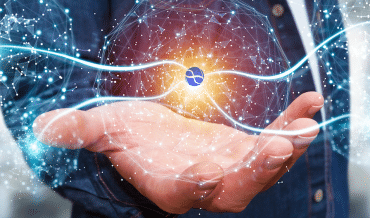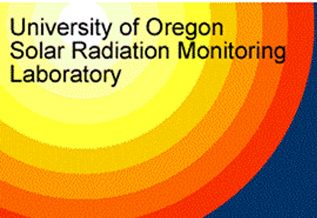NEUTRINO AND THE FUTURE OF ENERGY
- März 27, 2024
- März 22, 2024
- März 20, 2024
- März 19, 2024
- März 18, 2024

Neutrino Wiki jetzt auch auf Deutsch!
Информация о нейтрино теперь и по-русски
Más información sobre neutrinos también está disponible en español!
- März 27, 2024
- März 22, 2024
- März 20, 2024
- März 19, 2024
- März 18, 2024
- März 17, 2024
- März 14, 2024
- März 12, 2024
- Mai 23, 2019
- Mai 23, 2019
- Januar 14, 2019
- Januar 14, 2019
- November 24, 2018
- Oktober 5, 2018
- September 27, 2018
- Juli 17, 2018
What is Neutrino Energy?
The Neutrino: A Mysterious Particle
The idea that matter is made up of small building blocks is very old. Ancient Greek thinkers like Leucippus suggested such a theory and even coined the term “atom” as the name of the tiny unit. By the 1800s, modern scientists expanded on this idea and began to unlock the secrets of the atom. They discovered that atoms were made up of smaller “subatomic” particles like electrons.Yet, these early physicists did not realize that even smaller particles existed until radioactivity was discovered near the beginning of the 20th century. Ernest Rutherford, an early British researcher in radioactive elements, discovered that electrons were emitted when a radioactive substance decays. Further study revealed that there was an unexplained loss of energy during this decay process.
The law of the conservation of energy tipped off scientists that there must be a mysterious particle which contained the missing energy. Physicist Wolfgang Pauli theorized that an unidentified sub atomic particle is emitted along with an electron during the decay process, and called it a “neutron.” In 1931, Italian physicist Enrico Fermi renamed the particle “neutrino” to distinguish it from the just discovered larger neutral particle, the neutron.
It would take scientists another 25 years to verify the existence of neutrinos. In 1956, Los Alamos scientists Clyde Cown, Frederick Reines, and three other researchers detected neutrinos in laboratory experiment that used large tanks of water located near a nuclear reactor. The physicists were able to detect neutrinos emitted from the reactor by recording their interactions with protons in the water. This was the confirmation of Pauli’s theory and proof that neutrinos did exist. The team of scientists eventually won the 1995 Nobel Prize for their discovery.
However, the potential of the tiny particle was unknown at first, since researchers believed neutrinos lack any mass. Without mass, there would be little practical benefit to be harnessed from the sub-atomic particle. It would take another generation of research before the value of neutrinos would be seen.
The Valuable Properties of the Neutrino
Researchers have found that neutrinos possess some valuable properties. First, the tiny particles have mass. This fact eluded scientists for many decades. “Scientists have assumed for decades that, because they interact so little with matter, neutrinos must lack any measurable mass,” writes Jennifer Chu of the Massachusetts Institute of Technology.This belief changed when scientists discovered that neutrinos oscillate. Two physicists, working independently of each other, discovered that neutrinos can change between three different “flavors.” This is called “oscillation.” Takaaki Kajita and Arthur B. McDonald shared the 2015 Nobel Prize in Physics for their simultaneous discovery of this feature. For oscillation to occur, a neutrino must possess mass.
While the mass amount is so small that it makes it difficult to measure it, this characteristic of a neutrino is still immensely important as a energy source. This is due to energy’s special relationship with mass. Einstein’s Special Theory of Relativity described this relationship in the famous equation E=MC2, which revealed that mass can be converted into energy. With trillions of neutrinos reaching earth each day from the Sun, vast amounts of energy can be harnessed if science can unlock the process to convert neutrino mass to electric energy.
Another important property of the neutrino is its “ghost-like” nature. The particle is so small that it does not interact with other materials. This means neutrinos pass through solid matter as if it did not exist. Scientists estimate that billions of neutrinos pass through the Earth each day. This feature means that it would be possible to produce energy anywhere on the face of the earth at any time from sun’s neutrinos – even when a location is facing away from the sun.
The Vast Possibilities for the Future
With an increased understanding of the neutrino, many possibilities exist for practical applications. First, neutrinos may improve monitoring of nuclear weapons. Since every radioactive material produces neutrinos, the production of nuclear weapons by rogue nations could be monitored with detectors tuned to identify neutrinos from a great distance. “[Such a] device would consist of a tank containing thousands of tons of gadolinium-doped water and could theoretically detect antineutrinos from an illicit reactor up to 1,000 kilometers away,” writes Jesse Emspak for Scientific American.Second, neutrinos may be useful in researching the inner depths of the Earth. This is due to the tiny particles’ reactions when passing through materials. A neutrino spins as it travels, and this movement is influenced by the material through which it passes. Scientists believe they could develop neutrino scanners which could “see” into the Earth’s core and identify specific minerals or oil deposits.
Third, communication systems could be improved with the harnessing of neutrinos. Electromagnetic radiation has been the traditional medium for transmitting communication, but it has its limitations. For example, seawater interferes with efficient communication with submerged nuclear submarines. Yet, neutrinos easily pass through seawater, which would make them an idea carrier of communication. While physicists have long theorized that neutrino-based communication was possible, it was not proven possible until a 2012 experiment at Fermilab in Batavia, Illinois. Researchers there used the lab’s neutrino beam projector to transmit the word “neutrino” 1 km.
Finally, the greatest potential benefit of neutrinos is the production of energy.
Though scientists have long dismissed the idea that neutrinos could serve as an energy source, the 2015 discovery of the mass of the neutrino convinced some in the field of science and industry that neutrino energy is possible. Neutrino, Inc. is a U.S. company focused on harnessing the power of the tiny particle. Collaborating with its subsidiary, Neutrino Germany GmbH, Neutrino, Inc. is currently developing neutrino-powered devices that can charge small devices like smart phones. Once this is achieved, the company then will tackle the challenge of developing a charging cell large enough to power an individual home.
“The future is green energy, sustainability, renewable energy,” said former California Governor Arnold Schwarzenegger. The tiny neutrino may be the key to unlocking a future of abundant, clean energy.

















